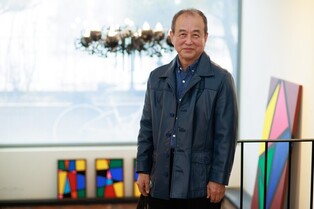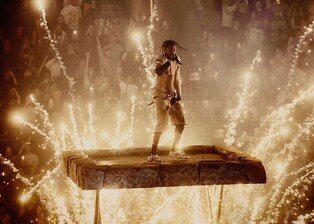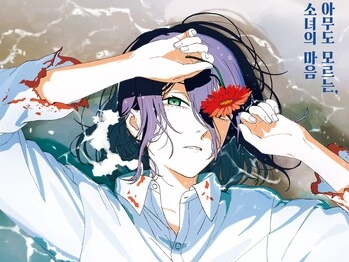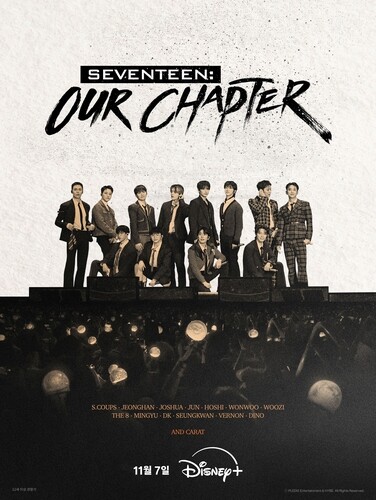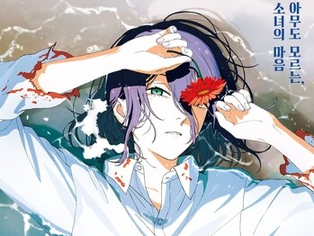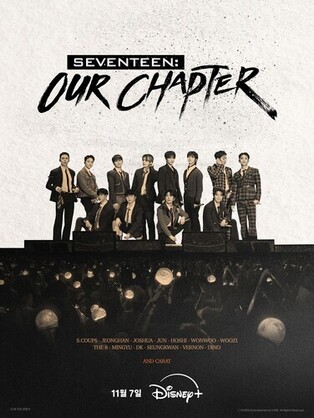*Editor’s note: K-Odyssey introduces travel journals by alumni of Yonhap News Agency Travel Academy, provided in Korean and English. The original Korean article precedes the English translation.
*편집자 주: K-Odyssey는 연합뉴스 <여행자학교> 수료생들의 여행기를 한국어와 영어로 소개합니다. 한국어 원문을 먼저 게재한 뒤 외국 독자들을 위해 영어 번역본도 함께 싣습니다.
타임머신 여행 같은 경주의 숨결
신재천(여행자학교 1기)
‘사사성장탑탑안행(寺寺星張塔塔雁行).
‘절은 별처럼 총총하게 펼쳐있고 탑은 기러기 떼처럼 줄지어 있다.’
고려시대 일연 국사가 쓴 『삼국유사』에 신라의 서라벌(경주)을 가장 적절하게 표현한 말이다. 이 문구대로 경주는 지금도 절터(寺址)가 많고 곳곳에 석탑이 남아있다.
경주는 고등학교 수학여행지였다. 까만 교복을 입고 천마총 앞에서 찍은 사진이 내 유일한 수학여행 흔적이다. 며칠을 갔는지 어디를 갔었는지 기억에 없다. 모든 수학여행이 그렇듯이 문화유산이나 역사 기행보다는 여행 중에 벌어진 에피소드만 편린으로 남아있다.
곡선구간을 달리는 기차 창밖으로 모자를 흔들며 뒤 칸 여학생들에게 소리치던 기억과 무슨 잘못 때문인지 단체로 기합 받으며 하룻밤을 새웠던 추억이 남아있다.
업무 출장 중 하루를 빚내서 경주에 사는 초등학교 친구에 이끌려 감포 바다의 신라 역사를 찾아보았다.
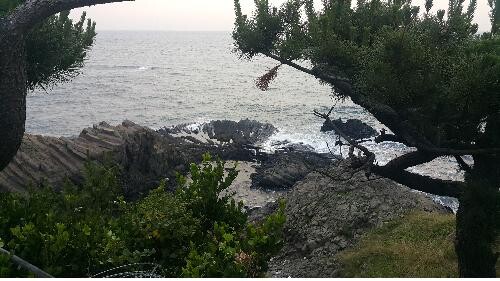 |
| ▲감포 바다에는 수억 년 전 화산활동으로 생긴 주상절리가 있다. 경주 양남 주상절리는 부채꼴 형태로 유명하고 대부분의 주상절리가 세로지만 양남 주상절리는 바위가 가로로 쪼개졌다. 문무대왕릉으로부터 10분 정도 거리에 있다. Overview of Gampo sea. |
감포 바다는 석굴암과 불국사가 있는 토함산에서 멀지 않다. 차량으로 채 이십 분도 가지 않아 파란 물결이 출렁이는 동해를 본다.
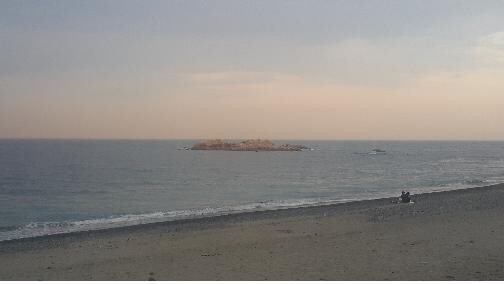 |
| ▲감포 해변에서 보이는 문무대왕릉, 대왕암이라고도 한다. 바다의 용이 되어 나라를 지키겠다는 문무대왕의 유지를 받들어 만든 해중 왕릉이다. 문무왕의 아들 신문왕은 이곳으로부터 1.5km 떨어진 곳에 ‘감은사’를 짓고 그 금당 아래 해룡이 드나들 수 있는 수로를 만들었다. Tomb of King Munmu, also known as Daewangam Hermitage, from a far distance. |
해변에서 200미터 안 되는 가까운 바다에 큰 바위 무더기가 보인다. ‘대왕암’이라 불리는 문무대왕릉은 삐죽삐죽 머리를 내민 해변 바위 사이 바닷속의 해중 왕릉이다.
바위 무더기 사이에 연못처럼 팬 곳이 있는데, 물 가운데에 두께 1.4미터 정도 되는 커다란 암석이 덮여있다. 유골을 뿌린 곳이다. 죽은 뒤에도 호국대룡(護國大龍)이 되어 불법을 받들고 나라를 지킬 것이라고 유언한 문무왕은 바닷속에 무덤을 마련했다.
바닷물결 따라 일렁이는 바위 그림자가 바닷속 해룡처럼 물결친다.
문무왕(신라 30대 왕, 626~681년)은 태종무열왕 김춘추의 아들이다. 아버지 김춘추가 닦아 놓은 통일의 기반 위에 외삼촌인 김유신과 더불어 백제와 고구려를 멸망시키고 당나라도 물리쳐 명실상부한 삼국통일의 대업을 이뤘다.
“여기서 1.5킬로미터 떨어진 곳에 감은사라는 절이 있었다고 한다.
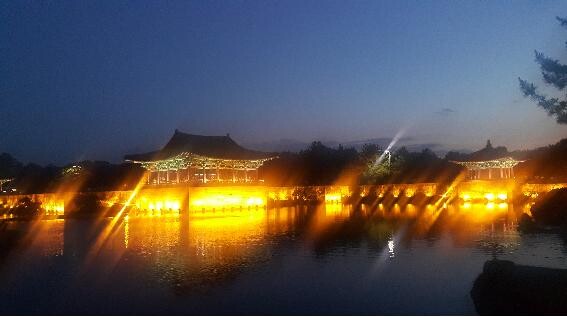 |
| ▲동궁과 월지(구.안압지) 문무왕이 통일의 대업을 이루고 궁 안에 큰 연못을 파고 못 가운데에 3개의 섬과 북쪽, 동쪽으로 12봉우리를 만들었으며, 여기에 아름다운 꽃과 나무를 심고 진귀한 새와 짐승을 길렀다고 전해진다. 왕자가 거처하던 동궁과 달이 비치는 연못(월지)의 모습이 색다르다. This photo shows beautiful reflection of the night time view of Donggung palace and Wolji Pond. |
“해룡이 된 아버지를 위해 문무와의 아들 신문왕이 지은 절이야. 가까이 가면 석탑 두 개가 엄청나게 커! 절터도 엄청나지. 감은(感恩)이란 ‘아버지 은혜에 감사한다’라는 의미가 있거든. 그 절 금당 아래는 물길을 만들어서 해룡이 드나들 수 있게 했다는 거야. 저 석탑에서 사리함이나 유물이 많이 나왔지. 여기 경주는 이상한 동네야. 그냥 논밭에도 석탑이 있어. 덩그러니 크고 작은 탑이 널려 있어. 아직도 발굴 안 된 게 많은가 봐.”
역사와 문화유산에 조예가 깊은 친구의 설명이다. 혼자 여행도 많이 다니고 지나는 길에 문화유적지가 있으면 항상 들러본다는 말이 헛말은 아닌가 보다.
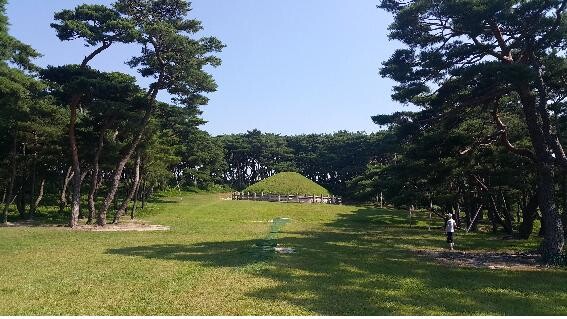 |
| ▲원성왕릉, 거대한 봉분에 맞게 병풍석이 둘러쳐 있다. 가까이 가서 보면 조선 태릉에 버금갈 정도로 큰 봉분이다. 신라 제38대 원성왕은 선덕왕이 후손 없이 죽자 상대등의 신분이었다가 왕위에 올랐다. Photo of Gwaereung, tomb of King Wonseong from a distance. |
경주 시내로 돌아가는 길에 왕릉이 보인다. 제38대 원성왕(785~798)의 능으로 추정하는 괘릉이다.
“우리 저기 한 번 가보자. 여러 번 지나쳤는데 한 번도 못 갔어. 가보자고.”
친구는 내 동의 따위는 아랑곳하지 않고 능 앞에 차를 댔다. 능 입구에 커다란 입식 석상과 사자상이 좌우로 두 개씩 있다. 오십여 미터 뒤에 커다란 봉분이 병풍석을 두르고 있다. 조선시대 왕릉 봉분보다 두세 배는 커 보인다.
괘릉은 관을 묻을 때 물이 나와서 그 돌기둥을 받치고 그 위에 관을 걸었다고(掛, 걸어놓을 괘) 해서 붙은 이름이다.
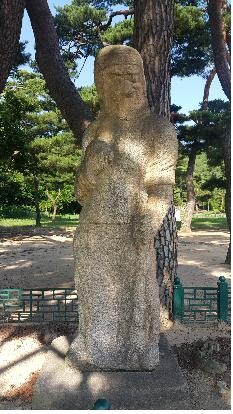 |
| ▲괘릉 입구에 서 있는 무인 석상이 서역인 모습이다. 중앙아시아의 사마르칸트 지역까지 번성했던 페르시아인의 모습이다. 다른 석상보다 훨씬 키가 크고 머리에는 터번을 둘러썼다. Photo of Stone sculpture of military official. |
“어? 여기 무인석 좀 봐…. 머리에 터번을 둘렀는데…? 수염도 가슴까지 덥수룩하고 키도 엄청 크다 야.”
자세히 뜯어보니 우리나라 차림새가 아니다. 무인 석상은 눈이 깊고 코가 큰 서역인 모습인데, 그 모델을 두고 소그드인(페르시아인)이라고 추정한다.
한 손에 큰 칼을 집고 갑옷은 외투 안쪽에 입었으며, 허리 뒤에는 산낭(算囊)이라는 주머니를 찼다. 추정컨대 당대 신라가 중앙아시아나 페르시아와 교류했다는 증거다. 통일신라 중대는 로마나 페르시아까지 무역하며 대외교역을 활발하게 전개하던 때다.
괘릉의 무인석상은 서라벌이 그 어느 도시보다도 대외 무역이 발달한 개방된 도시였음을 알려주는 상징물이다. 지금으로부터 1,300여 년 전에 인구 100만 명의 세계 4대 도시중 하나였던 서라벌은 21세기 서울보다도 훨씬 더 글로벌 메가 시티였던 셈이다. 다른 도시는 동로마제국 콘스탄티노플, 페르시아 바그다드, 당나라 장안을 꼽는다.
누구나 한 번쯤은 경주에 가봤다. 학창 시절 수학여행이든, 연애할 때 청춘 여행이든, 동호회 문화 기행이든 많은 추억이 있을 것이다.
경주는 1,500년 넘는 문화유적지가 숱하게 널린 곳이다. 발걸음만 내디디면 국보와 보물이 눈앞에 있고 신라인의 숨결과 손길이 고스란히 남아있는 역사의 보물이다.
석굴암, 불국사, 첨성대부터 경주를 보는 일은 타임머신 속으로 빠져드는 일이나 마찬가지다.
Dazzling time travel to Gyeongju
By Jae-cheon Shin (Alumnus of Travel Academy season 1)
寺寺星張塔塔雁行, “Number of temples is clustered like stars in the sky, and the pagodas are lined up like swarms of wild geese."
It is the
most appropriate expression of Silla's Sorabol, as exhibited in "Samguk
Yusa," written by State Preceptor Ilyeon during the Goryeo Dynasty. As the
phrase depicts, Gyeongju still has many temple sites, and stone pagodas remain
everywhere.
Gyeongju,
to me, was a destination for high school trips. The only evidence I have of the
trip is a photo of me posing in front of Cheonmachong Tomb wearing my black
school uniform. I have no recollection of where we went or how long the trip
was. Just like any other school trip, the heritage sites we visited remain
unknown. However, the memories I made with my friends are still vivid within
me.
I have
memories of waving my hat out the window of the train while shouting at the
female students in the back compartment as the train swerved around the
mountain, and staying up all night getting punished in groups for some reason.
During my
business trip, I spent a day with my elementary school friend who lives in
Gyeongju to learn about the history of Silla near Gampo Sea.
Gampo Sea
is not far from Tohamsan, where Seokguram Hermitage and Bulguksa Temple are
located. Within a 20-minute car ride, one can reach the East Sea with its blue
waves.
Less than
200 meters away from the shore, a large pile of rocks can be seen in the sea.
The tomb of King Munmu, also known as Daewangam Hermitage, is the world's first
submerged burial place.
There is
a pond-like hole within the piles of rocks, and in the middle of the water, a
large rock about 1.4 meters thick is placed. It is the place where the remains
were scattered. King Munmu, who vowed to become a protector of the nation even
after his death, set up a tomb underneath the sea to keep his promise.
Shadows
of the rocks sway along the waves like the sea dragons in the sea.
King
Munmu, the 30th king of Silla (626–681), was the son of King Taejong Muyeol,
Kim Chun-chu. On top of the foundation for unification laid by his father Kim
Chun-chu, King Munmu destroyed Baekje and the Goguryeo Dynasty along with his
maternal uncle Kim Yu-shin. Moreover, King Munmu defeated the Tang Dynasty,
finally achieving the great accomplishment of unifying the three kingdoms.
In the
past, there was a temple called Gameunsa Temple 1.5 kilometers from here.
"It
is a temple built by King Shinmun, son of King Munmu, for his father who became
a sea serpent. The two stone pagodas are huge! The temple grounds are also very
vast. Gameun means 'thanking for Father's grace.' Under the Jeolgeumdang, a
waterway was created so that the sea serpent could enter and exit. A lot of
sariras and relics came out of the stone pagoda. Gyeongju is a strange town.
Not only are there stone pagodas in the middle of rice fields, but also big and
small pagodas are located all over the place. There must be a lot of relics and
pagodas waiting to be excavated."
This was
an explanation given by a friend who is well-versed in history and cultural heritage.
I guess it's true that he often travels alone and visits cultural sites on his
way to the destination.
On the
way back to downtown Gyeongju, you can see the royal tomb. The tomb is presumed
to belong to the 38th King Wonseong (785-798).
"Let's
go over there. I passed by several times, but I couldn't visit once. Let's
go."
My friend
pulled over next to the tomb, regardless of my consent. At the entrance, I was
greeted by two large standing statues and two lion statues. About 50 meters
behind, a large tomb was surrounded by a stone mound. It seemed two or three
times larger than the royal tomb from the Joseon Dynasty.
The name
Gwaereung, the tomb of King Wonseong, was selected because water flooded the
scene when the coffin was being buried; therefore, the coffin was hung on top
of the stone pillars.
"Huh?
Check out this stone sculpture of a military official, it has a turban on its
head...? The beard is shaggy and it's very tall."
Looking
at it carefully, we found out that the statue was not wearing Korean
traditional attire. Moreover, the statue had Western facial features such as
deep eyes and a large nose, suggesting that the statue was modeled after
Sogdian (Persian).
The
statue was holding a large sheath in one hand, with the armor underneath the coat,
and behind the waist, a pocket for the abacus was worn. Presumably, it serves
as evidence that the Silla Dynasty had connections with Central Asia or Persia.
The Unified Silla was actively engaged in foreign trade with Rome and Persia.
The stone
sculpture of a military official at Gwaereung, the tomb of King Wonseong, is a
symbol that indicates Sorabol was engaged in more foreign trade than any other
city. Sorabol, one of the world's four largest cities with a population of over
1 million 1,300 years ago, was a much more global mega city than Seoul in the
21st century. Other cities include Constantinople in the Eastern Roman Empire,
Baghdad in Persia, and Chang'an from the Tang Dynasty.
Everyone
has been to Gyeongju at least once, whether it's due to a school trip, with
loved ones, or a club. The location holds many memories.
Gyeongju
is a place that holds numerous cultural sites and heritages accumulated
throughout 1,500 years of history. With every step, visitors will be introduced
to various national treasures and will be able to witness the spirit of the
Silla people.
Visiting
Seokguram, Bulguksa, and Cheomseongdae, all located in Gyeongju, is like
falling into a time machine.
(This article is translated from Korean to English by Joonha Yoo)
(END)
(C) Yonhap News Agency. All Rights Reserved


















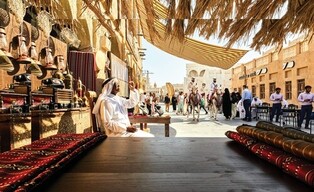



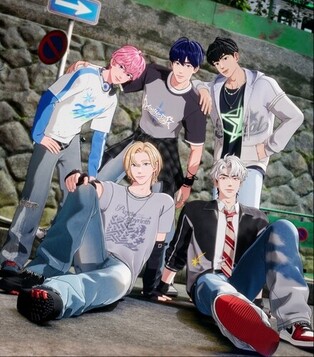
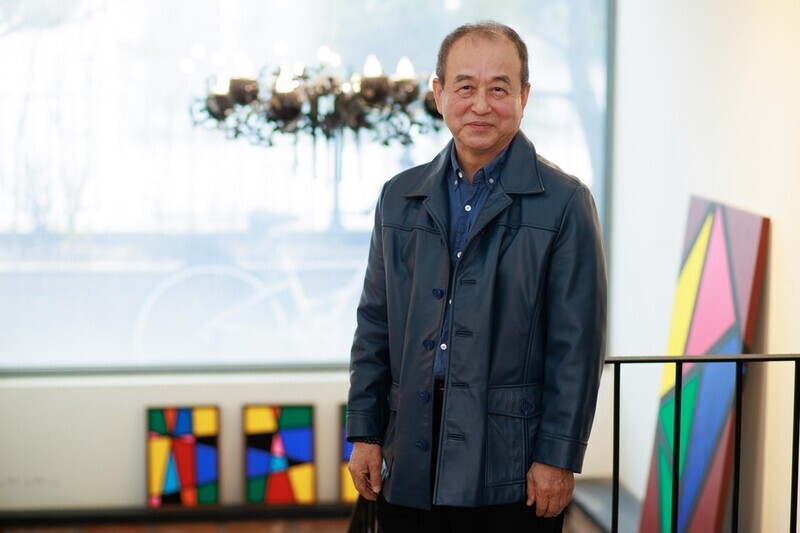
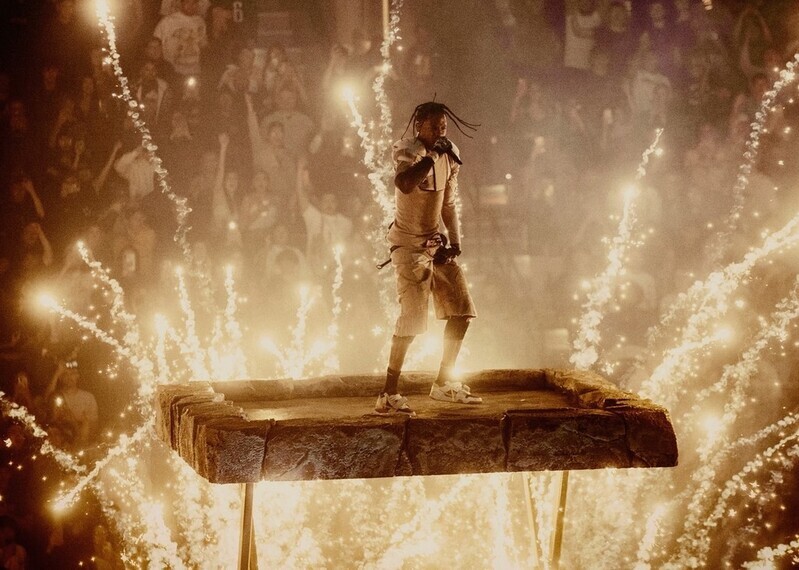
![[가요소식] 보이넥스트도어, 신보로 3연속 밀리언셀러 달성](/news/data/20251025/yna1065624915905018_166_h2.jpg)
